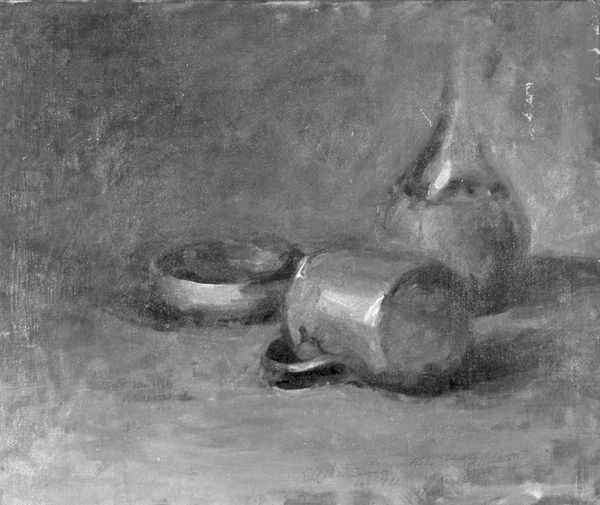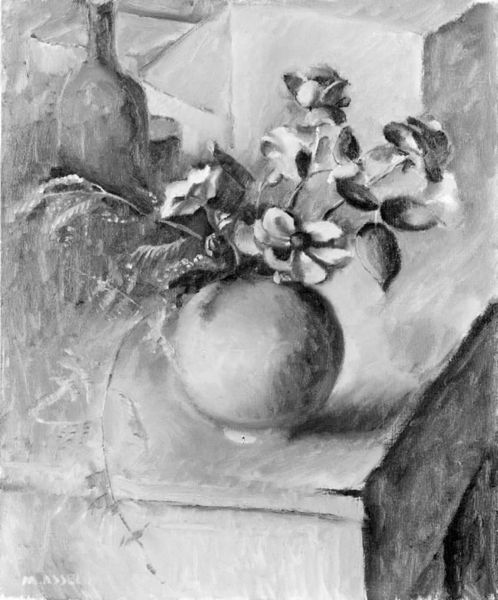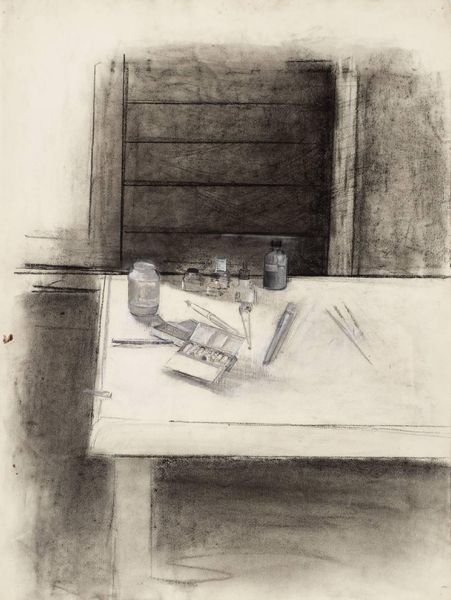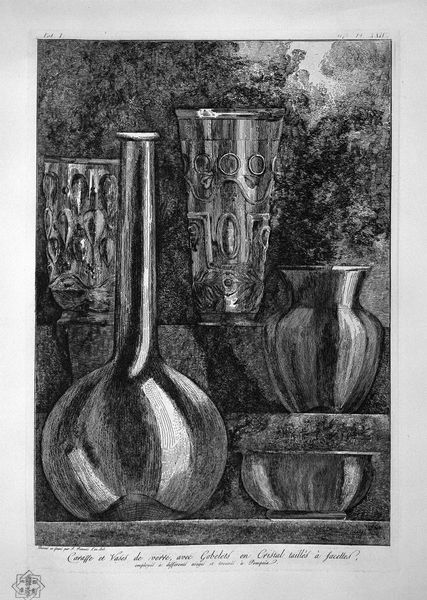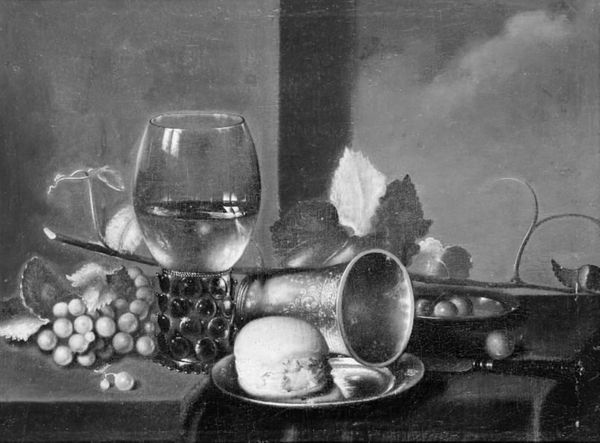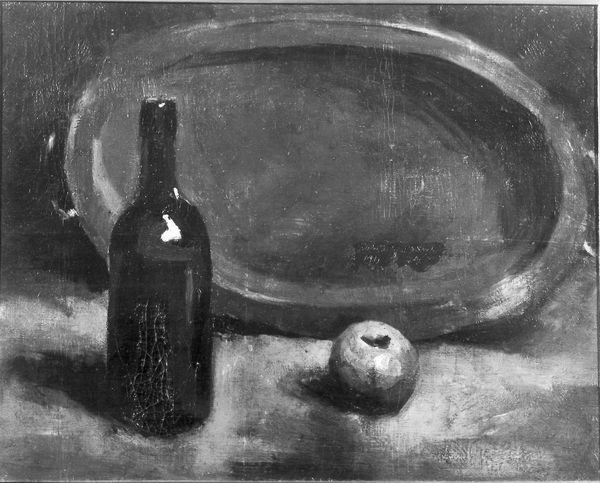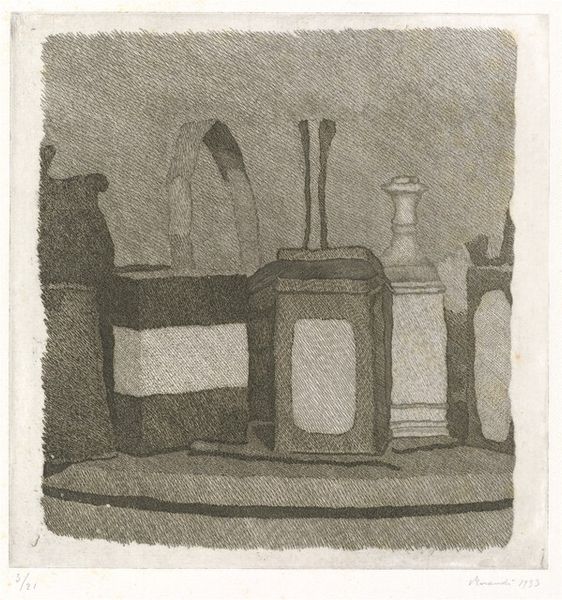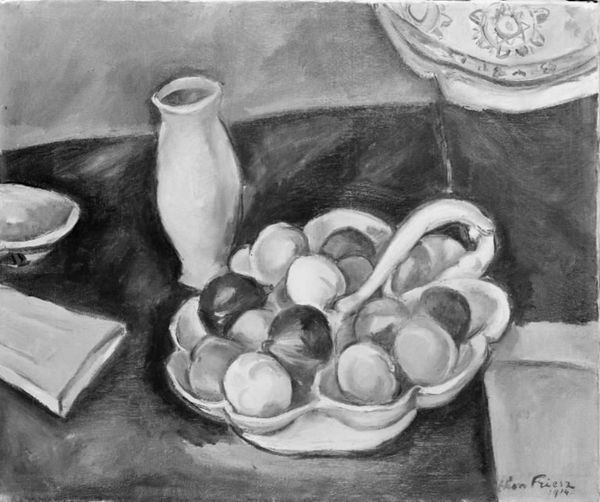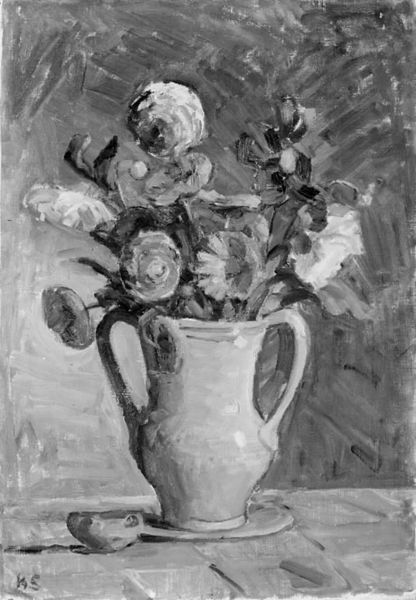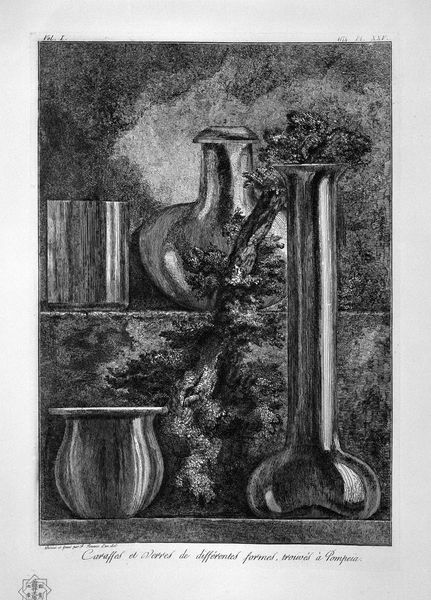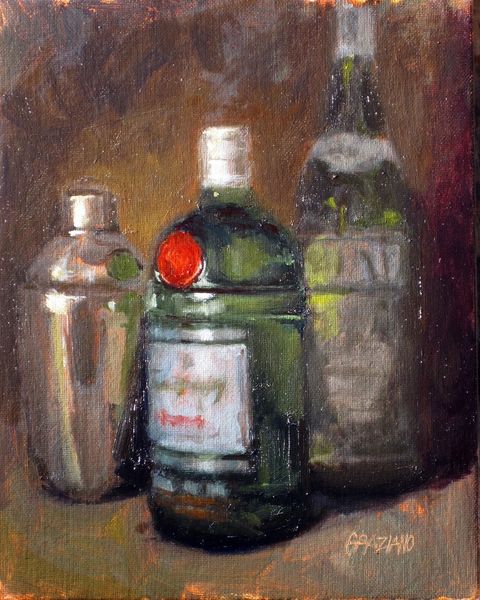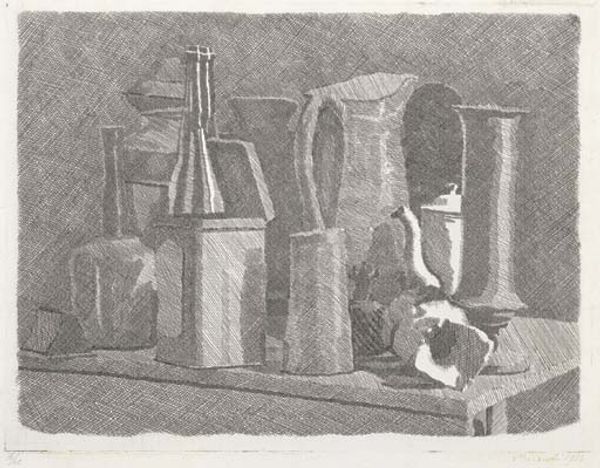
painting, paper
#
painting
#
charcoal drawing
#
paper
#
realism
Dimensions: 18 cm (height) x 31 cm (width) (Netto)
Curator: Gazing at Lorenz Frølich's "Still Life in White and Grey" from 1837, I find myself immersed in a hushed, almost contemplative atmosphere. The objects seem suspended in time, cloaked in subtle gradations of light and shadow. Editor: Indeed, that quietness is quite compelling. But looking at it from a feminist perspective, I see these domestic objects – a water jug, bowl, carafe – hinting at the unseen presence of women and their often-unacknowledged labor in the 19th century. A silent, grey space occupied by their everyday rituals. Curator: It’s more than just a snapshot of domestic life, I think. It's like Frølich is orchestrating a subtle symphony with simple forms and minimal palette, isn’t it? Notice the soft transitions; there are no abrupt lines here. He’s not chasing perfection. Editor: The way the objects are rendered, though "realistic", it’s filtered. We’re seeing whiteness not just as a colour but as a dominant cultural ideal – the purity, cleanliness, and virtue often imposed upon women during that era. And also about colonialism: we think about sugar, and porcelain arriving into Denmark from afar. Curator: Oh, I see what you’re driving at! Yet, isn't there also something beautiful about the artist's focus? These muted tones create such a serene effect, almost meditative. I get completely lost in the silvery glow. Editor: Perhaps. But that very serenity could be argued as a kind of imposed ideal. The domestic sphere presented not as dynamic, vibrant, or filled with activity but as calm, muted, and obedient. Think of Ibsen's *A Doll’s House* published just four decades later. It's all a façade! Curator: So much weight hangs on a few simple vessels rendered in grey. I admire how a seemingly humble artwork on paper—in charcoal no less—can open so many doors into unexpected conversations. Editor: Exactly. What might at first glance seem like a simple still life can actually provoke very uncomfortable and vital social critique, sparking further discussion on power, identity, and representation. The image never becomes silenced by history.
Comments
No comments
Be the first to comment and join the conversation on the ultimate creative platform.
